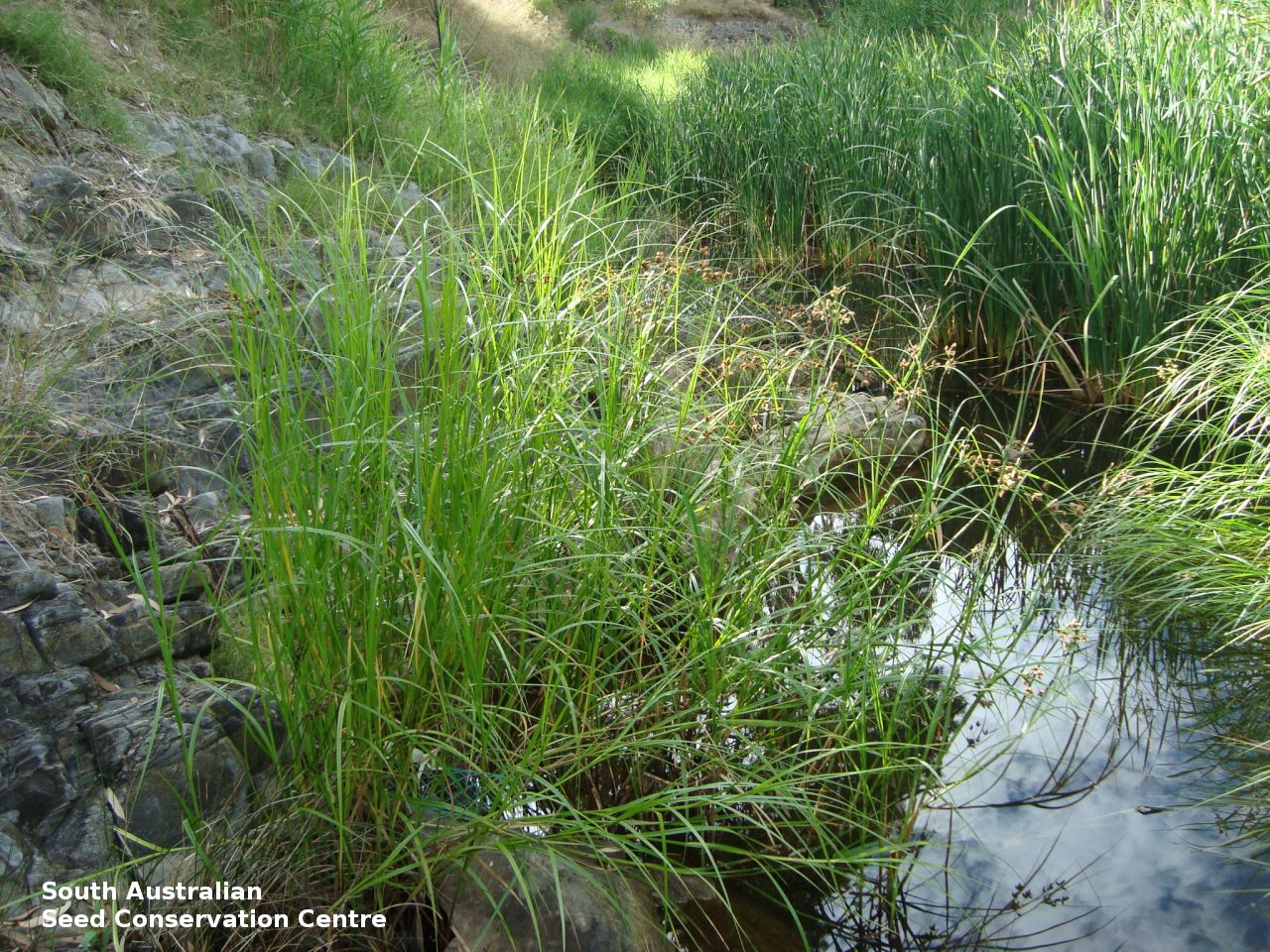
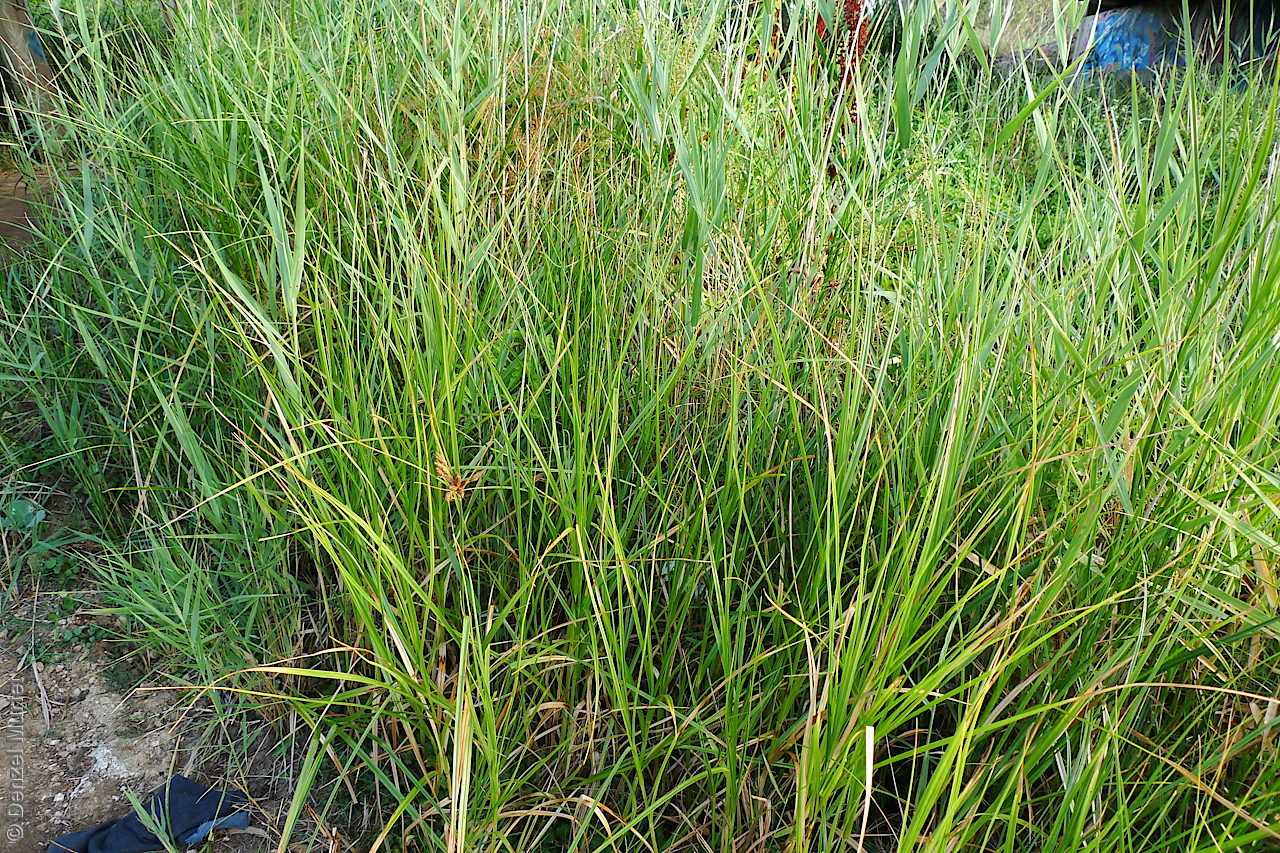
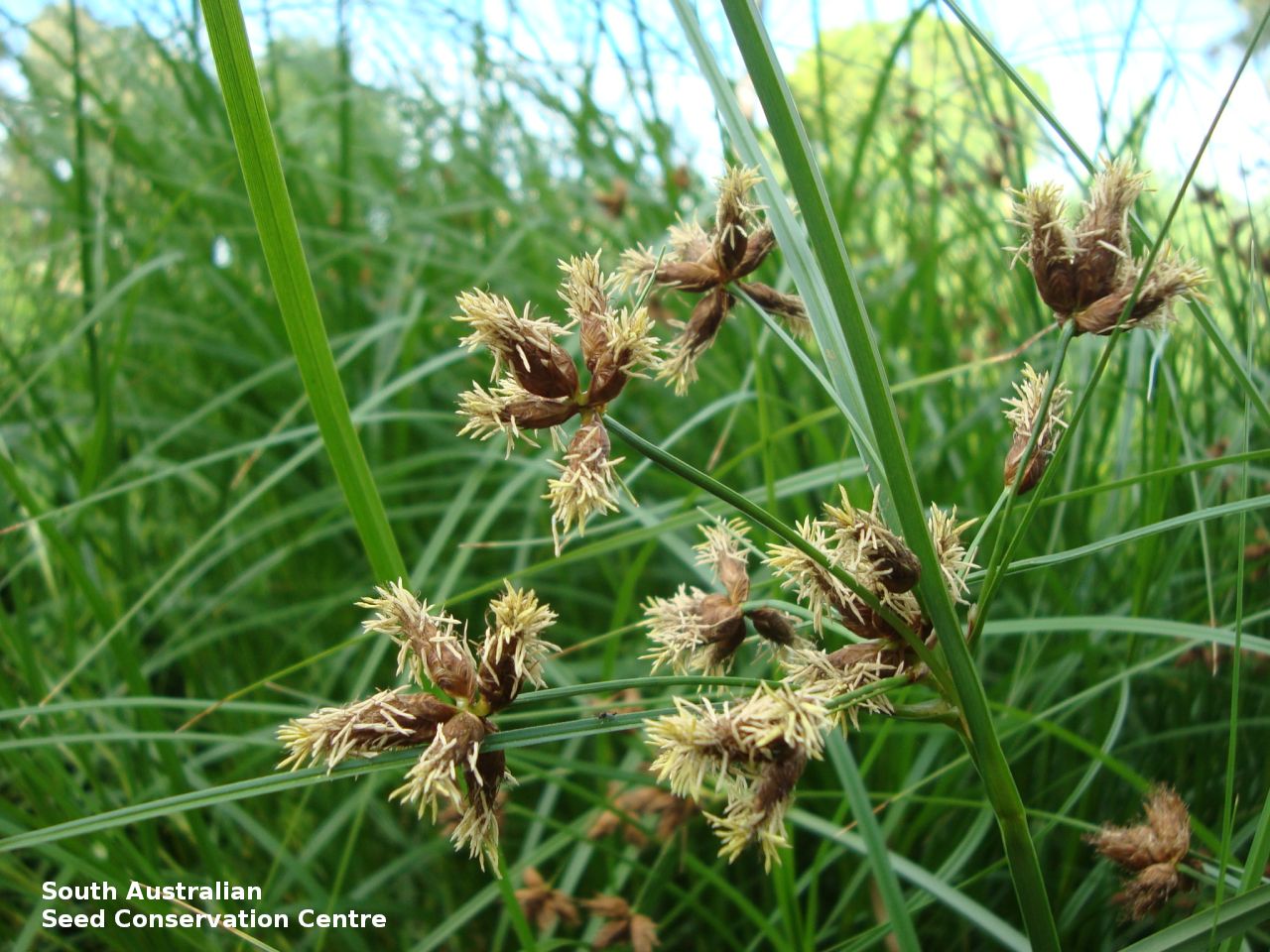
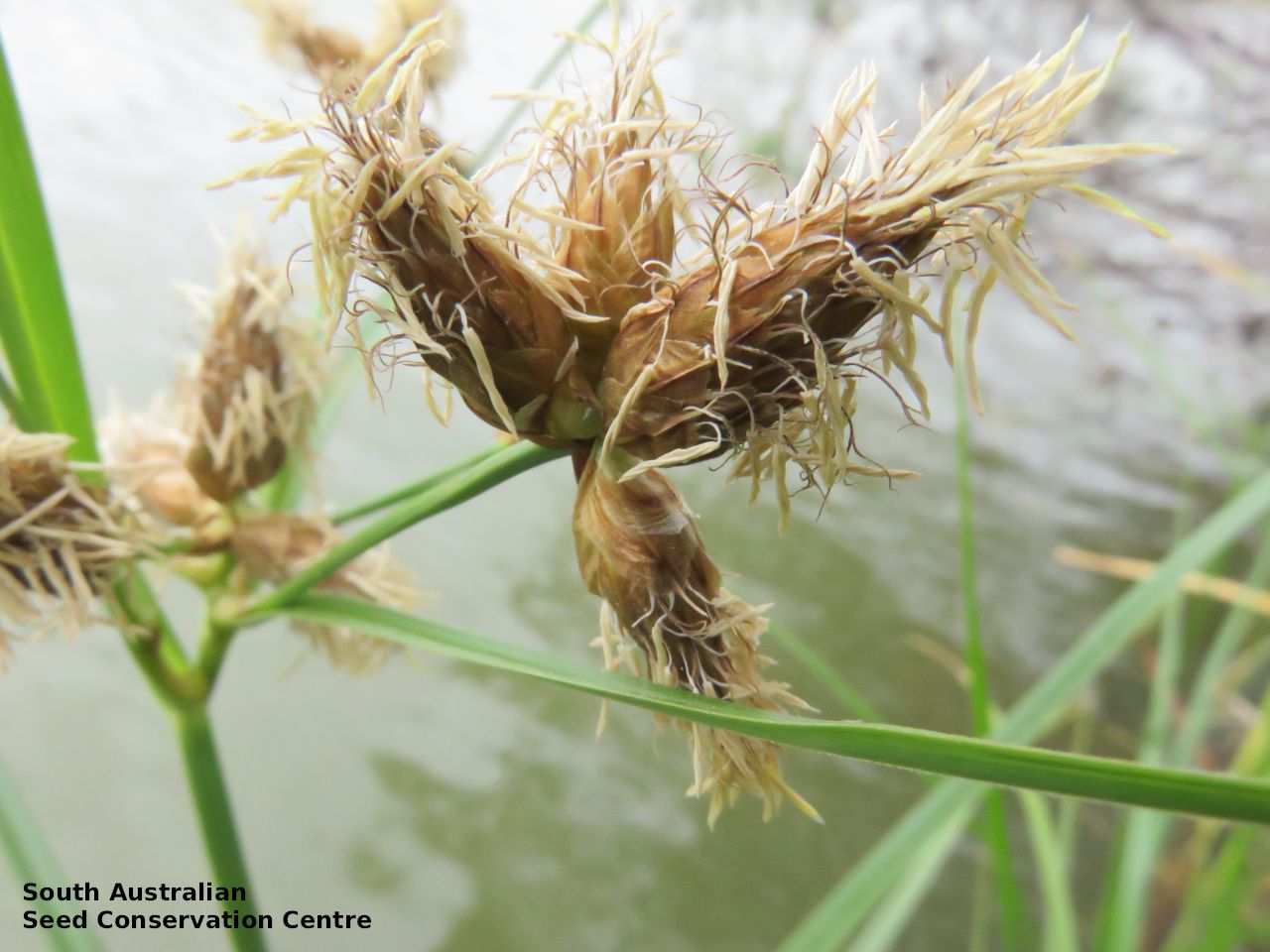
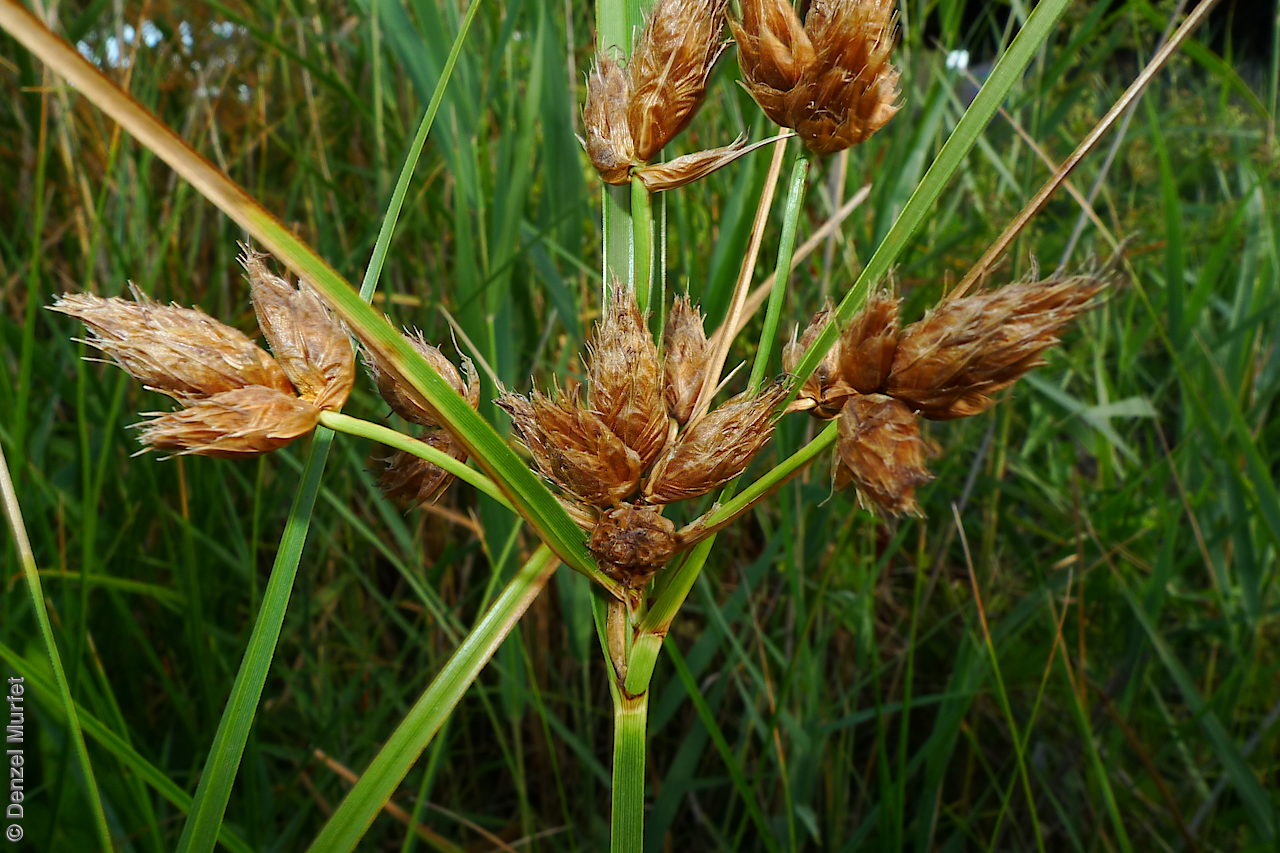
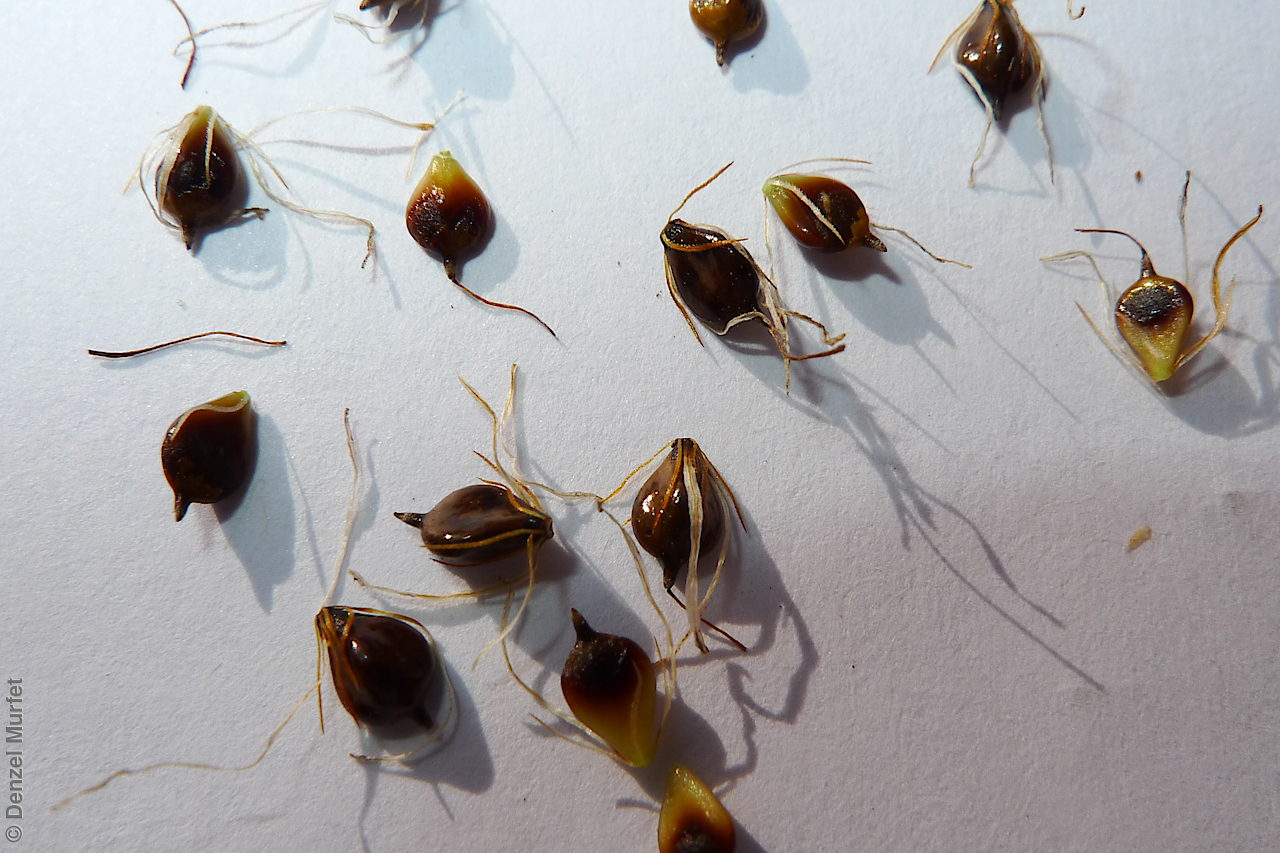
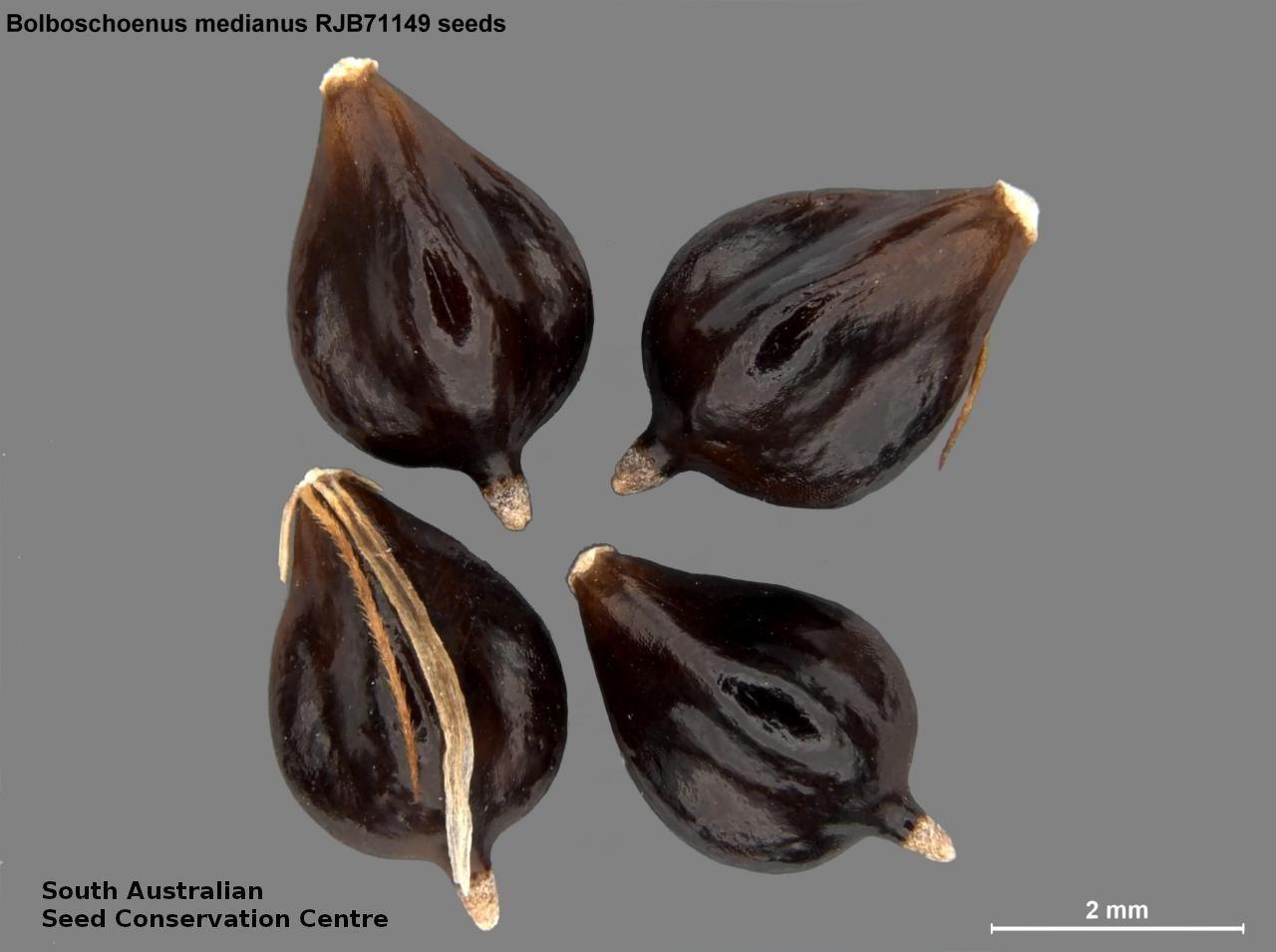

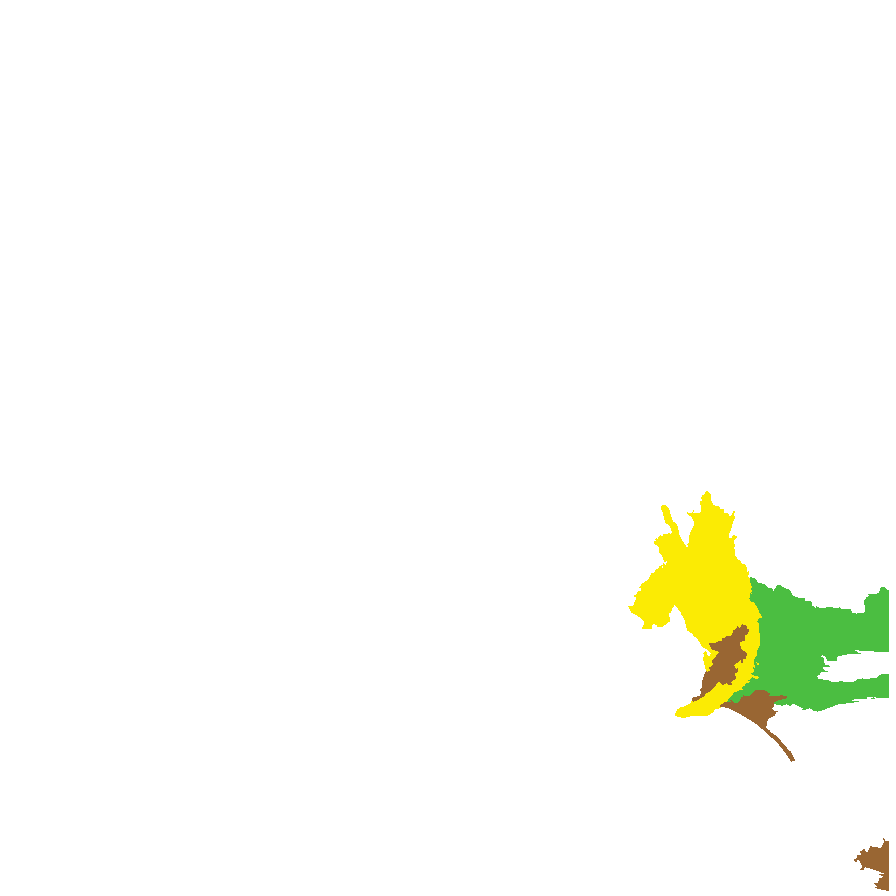
Botanical art
Prior names
Scirpus maritimus, partly
Scirpus fluviatilis, partly
Scirpus medianus
Common names
Marsh Club-sedge
Marsh Club-rush
Etymology
Bolboschoenus from the Greek 'bolbos' meaning a bulb and 'Schoenus' a genus of Cyperaceae from which it was considered separable by the swellings on the stem.
Distribution and status
Found in swamps and deep rivers in the Mount Lofty Ranges and the Murrayland in South Australia, with a few records from the lower South-east. Also found in Western Australia, Queensland, New South Wales, Victoria and Tasmania. Native. Uncommon in South Australia. Rare in Western Australia, Queensland and Tasmania. Common in the other States.
Herbarium regions: North Western, Murray, Southern Lofty, South Eastern, Green Adelaide
NRM regions: Adelaide and Mount Lofty Ranges, Alinytjara Wilurara, South Australian Murray-Darling Basin, South East
AVH map: SA distribution map (external link)
Plant description
Creeping rhizome bearing hard globose tubers with woody three-sided stems to 200 cm high, Leaves often to 50 cm long and 11 mm wide, grass-like. Inflorescence umbel-like with 4-6 rays each with dull, red-brown spikelets. Fruits are dense reddish brown clusters of fruit heads. Seeds are dark brown to black three-sided ovoid nut to 4 mm long and 2 mm wide, with smooth and shiny surface. Seed embryo type is capitate.
Seed collection and propagation
Collect seeds between November and February. Collect whole heads that are brown, containing dark hard seeds. Place the heads in a tray and leave to dry for one to two weeks. Then rub the heads with a rubber bung to dislodge the seeds. Use a sieve to separate any unwanted material. Store the seeds with a desiccant such as dried silica beads or dry rice, in an air tight container in a cool and dry place. Seed viability is usually high.
| Location | No. of seeds (weight grams) | Number of plants | Date collected | Collection number Collection location | Date stored | % Viability | Storage temperature |
|---|---|---|---|---|---|---|---|
| BGA MSB | 15,900 (79.6 g) 15,900 (79.6 g) | 35 | 11-Jan-2007 | RJB71149 Southern Lofty | 1-Aug-2007 | 85% | -18°C |
Number of plants: This is the number of plants from which the seeds were collected.
Collection location: The Herbarium of South Australia's region name.
% Viability: Percentage of filled healthy seeds determined by a cut test or x-ray.